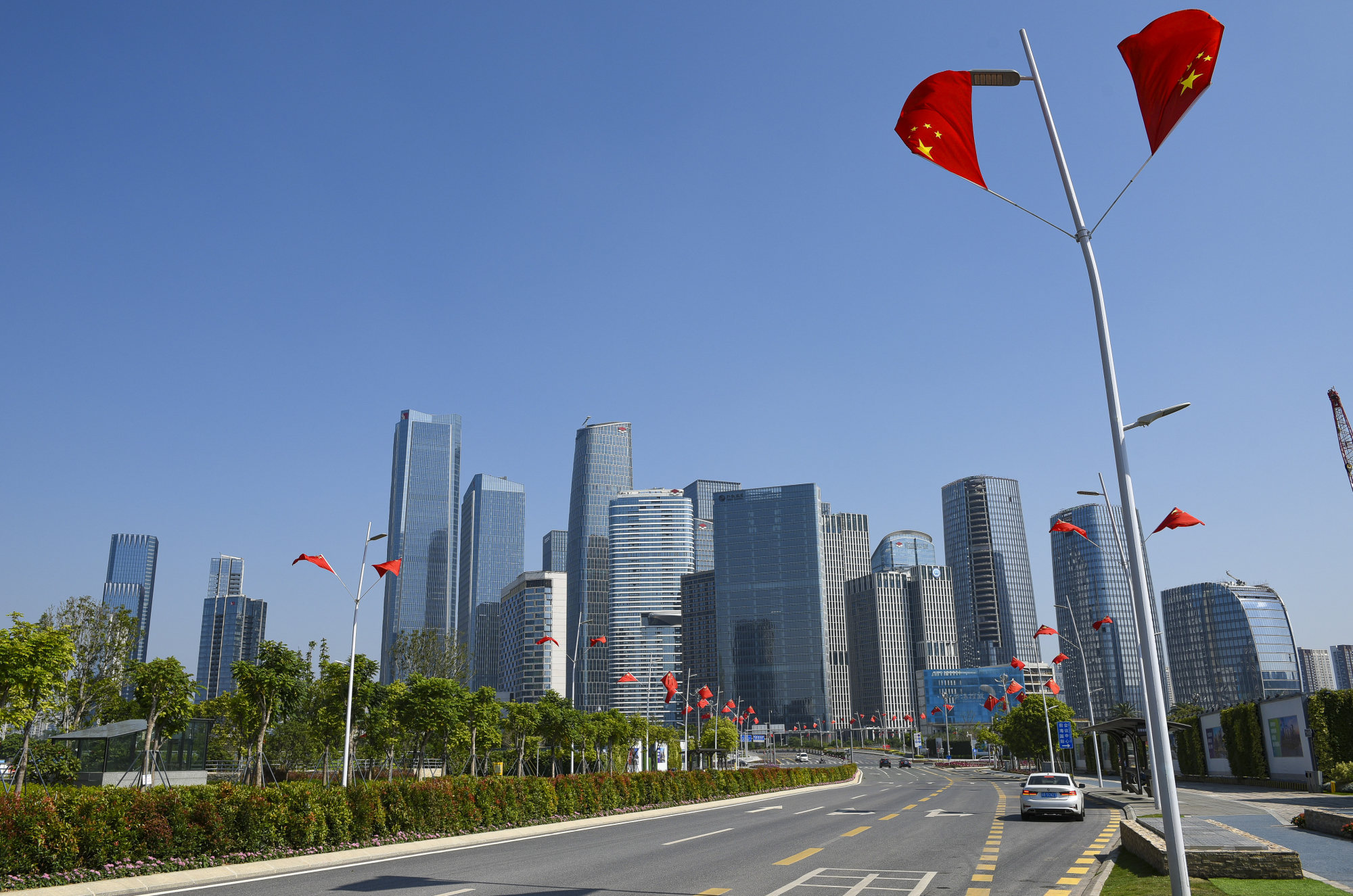
Beijing wants this Guangzhou district to become young Hongkongers ‘new home’, but what will make it work?
- Heads of Hong Kong-based associations urge incoming government to support proposal to turn Guangzhou district of Nansha into new home for young talent
- China’s top governing body last week unveil plan to incentivise young Hongkongers to study, work and establish businesses in district
The incoming Hong Kong government must restart talks with Beijing over fully reopening the mainland China border or risk jeopardising plans to lure young residents to Nansha in Guangdong province, industry leaders have said.
The association heads also said they hoped authorities on both sides of the border could discuss more policies to make it easier for Hong Kong residents to study, work and live in Guangdong.
Last week, China’s State Council unveiled a variety of incentives as part of a new initiative to encourage residents from Hong Kong and Macau to work, study and start new businesses in the southern Guangzhou district of Nansha.
The blueprint from the country’s top governing body also outlined how residents from both cities could benefit from increased cooperation in areas such as education, technological innovation and financial services.
Can China ‘integrate’ Hong Kong into its southern economic powerhouse?
The leaders of several youth affairs and education associations said they hoped the incoming administration, which takes office on July 1, would make it a priority to promote the initiative and regional integration.
“The plan proposed directions on education, but the actual policies still need to be ironed out,” said Wong Kwan-yu, president of the 37,000-member Federation of Education Workers.“The government should actively respond to all development plans laid down by Beijing, as Hong Kong should play a leading role in the Greater Bay Area project.”
Wong, a local deputy to the National People’s Congress, the country’s legislature, was referring to the central government’s plan to turn Hong Kong, Macau and nine cities located in Guangdong province into an economic powerhouse.
Nansha, together with Qianhai in Shenzhen and Hengqin in Zhuhai, have all been earmarked by Beijing as key development zones under the project.
Last September, the State Council issued blueprints for the initiatives involving Hengqin and Qianhai. Under the Hengqin plan, a new cooperation zone, which is three times the size of Macau, will be set up across the border with the gaming hub to help develop new industries, such as traditional Chinese medicine.
The Qianhai plan, meanwhile, will empower the economic zone in western Shenzhen to expand eightfold, from 14.9 sq km to 120.6 sq km, with the aim of providing a “wider stage” for Hong Kong to grow its economy.
Lau Siu-kai, vice-president of the semi-official Chinese Association of Hong Kong and Macau Studies think tank, said the next administration should examine how the three plans could be executed under Covid-related travel restrictions.
“The Qianhai plan was more focused on financial service and high-end service industry, but Nansha is more for the young people, creative industries, innovation and elderly care,” he said.
“Even before Hong Kong’s border with the mainland [China] can be opened, a lot of exchange sessions and discussions can be conducted online.”
Lau also noted that the local business sector had proposed issuing up to 1,000 special visas for Hongkongers to travel to Guangdong for business talks as an alternative to fully reopening the border.
He suggested extending such visas to young Hongkongers offered internships or full-time employment opportunities, as well as anyone looking to launch a start-up company, in the province to encourage them to work on the mainland.
The Nansha blueprint, which aims to “significantly increase” the number of Hong Kong and Macau residents in the district by 2035, also included measures to attract young talent from the two cities.
Greater Bay Area is key to Hong Kong’s climate goals: SCMP Summit
Incentives proposed by mainland authorities included allowing residents from both cities, especially those who graduated from Chinese universities, to work and settle in the district.
Young entrepreneurial teams that received subsidies from either location would also continue to directly benefit from such measures if they opted to be based in Nansha.
Lawmaker Kenneth Leung Yuk-wai, also the outgoing chairman of the Hong Kong United Youth Association, and All-China Youth Federation vice-chairman Clarence Leung Wang-ching described the recognition of Hong Kong subsidy schemes as a highlight of the Nansha plan.
“The recognition of the Hong Kong government’s subsidy and entrepreneurship would really help [young entrepreneurial teams] save a lot of paperwork,” Kenneth Leung said.
Clarence Leung added that he was concerned about the border closure, saying he hoped the epidemic situation would improve after incoming leader John Lee Ka-chiu took office.
Lau, meanwhile, noted that Nansha had already served as a site for development since the late Hong Kong tycoon Henry Fok Ying-tung began efforts to develop the district in the 1990s.

Lawmaker Kenneth Fok Kai-kong, a grandson of the late tycoon, said he believed Beijing’s blueprint could lead to the district becoming “a first choice destination” for Hongkongers as they embraced integration with the mainland.
“My family started to invest in Nansha in the early 1990s, and my grandfather devoted most of his energy to the development of Nansha in his later years. We have the responsibility to inherit the dream of my grandfather,” he said.
Former Hong Kong leader Leung Chun-ying has previously worked with professionals from both the city and Guangdong to build a Hong Kong-style community in the district.
Last April, district authorities also established the Consultative Committee on Guangdong-Hong Kong Cooperation in Nansha, to bring 36 community leaders from both Hong Kong and the mainland under one roof to advise on the area’s transformation.
Pandemic derails plans to attract fresh Hong Kong graduates to Greater Bay Area
Aside from various residential and office buildings, the district also features several education facilities, including the Hong Kong University of Science and Technology’s new Guangzhou campus and the Minxin Hong Kong School, a non-profit school founded by Leung Chun-ying.
However, federation president Wong, who is also a member of the cooperation committee, said that while the district was home to the school and the university, authorities would need to do more to cater to the educational needs of Hong Kong children based in Guangdong.
Citing how children in Hong Kong receive 12 years of free education, Wong said he hoped youngsters could benefit from the same policy while living in the province.


